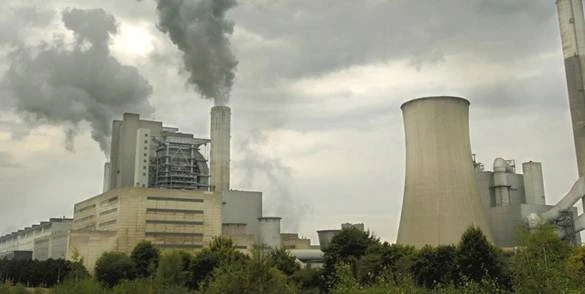
He affirmed that despite this huge expense, the growth and economic efficiency of the industry was still inadequate and appropriate policies need to be put in place in the near future.
JOURNALIST: - There is an opinion that it is time for the Government to tighten policies on some heavy industries that are consuming too much electricity. For example, the cement industry is one such industry that is consuming an excessive amount of electricity for production. What is your view on this?
Mr. TRAN VIET NGAI: - Currently, along with the steel industry, the cement industry is consuming the maximum amount of electricity, which accounts for about 20% of what is being used by all other major industries in Vietnam. On an average, there is a consumption of 100 kWh of electricity for one ton of cement, and with the current output of 86 million tons of cement, the total power consumption for cement production is estimated at 8.6 billion kWh of electricity. In a factory producing two million tons of cement per year, and using about two million tons of limestone, it means that it is consuming 200,000 tons of coal and about 170 million kWh of electricity, which is then generating about 2.2 million tons of CO2 from burning fuel.
It is worth mentioning that although the cement industry is one of the largest electricity consuming industries today, the growth and economic efficiency of this industry is still inadequate. Due to massive investment in the past ten years, Vietnam's cement industry has an imbalance between supply and demand. It is important to balance supply and demand to optimize investment efficiency and meet the requirements of sustainable development.
- What is your comment on the view that people are having to offset the price of electricity for heavy industries like cement, by paying a higher price towards electricity, and is this unreasonable?
- Among the huge power consumption sectors such as steel, cement, and chemicals, the low electricity selling price has not created pressure to force manufacturers to change outdated technologies with energy-saving and higher efficient technologies. This has led to a very low index of efficient use of electricity in Vietnam, for instance, one kWh costs only USD 1.27, less than half of the world average. Moreover, Vietnam's per capita income is low compared to the world average, and the price of electricity must be cross-subsidized for industrial production, affecting people's lives, and reducing purchasing power. This needs to be reconsidered.
For the cement industry, I need to calculate how much this will reduce, corresponding to price level of what people have to pay on electricity bills. There is need to set the retail price of electricity for cement production in ratio to the retail price of electricity for people’s consumption. This fierce competition will eliminate weak businesses and unprofitable businesses, along with affecting cement plants using outdated technology and force businesses to reduce and save production costs.
- If the application of thermos electric emission technology to utilize heat to operate the furnace itself is included in the planning content, will this help reduce the power shortage pressure for cement production?
- Cement production is associated with the consumption of coal and electricity. When operating, the kiln will generate a large amount of emission and dust at high temperatures (about 300 degrees Celsius), mainly at the preheating tower floor PH and cooling clinker. This process is both polluting the environment and wasting energy. According to calculations, one ton of exhaust heat can produce 3-5 kWh of electricity. If all cement plants utilize waste heat from clinker kilns to generate electricity, each year about 1.5 billion kWh will be utilized. This is a fairly large amount for an industry with large energy consumption, such as the cement industry.
But upto now, only ten out of 74 cement plants in the country have invested in this system due to many reasons, such as huge investment, high running cost, and no clear plan. In addition, the fact that even when complete, the power generated from the application of heat emission technology will be very limited, and the amount of compensation negligible compared to power the cement industry is consuming in current production.
- Thank you very much.




















